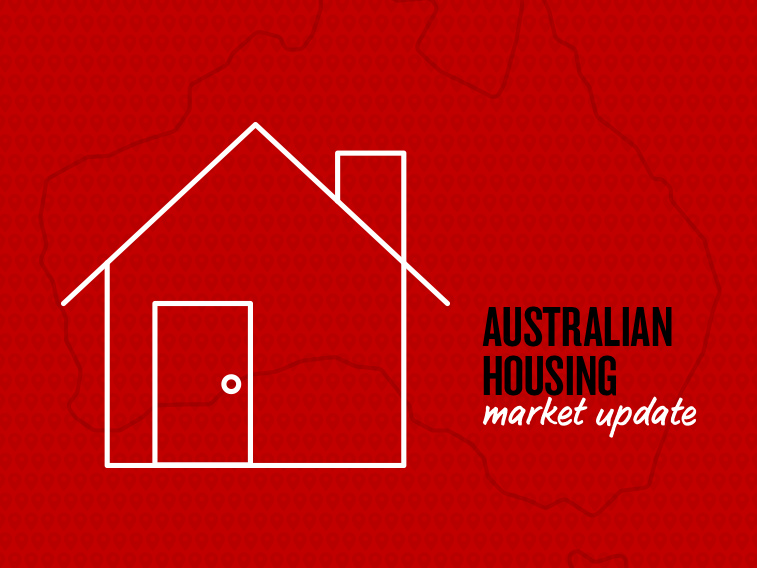The latest NAB Regional & Agribusiness webinar provides insights on the Australian & Global Economies, and a regional and rural property update. Watch the webinar here.

Webinar
National dwelling values were down 1.0% over the month, which was the thirteenth monthly fall over the past fifteen months.

National dwelling values were down 1.0% over the month, which was the thirteenth monthly fall over the past fifteen months. CoreLogic’s national dwelling value index is now down by 6.1% since the market peaked back in October 2017.
The weakest housing market conditions continue to be centered in Sydney and Melbourne, where values have fallen by at least 1% on a monthly basis since November last year. Both markets have seen an acceleration in the rate of decline over the past three months, with the rolling quarterly fall tracking at the fastest pace since the downturn commenced. Sydney dwelling values were down 4.5% over the three months ending January 2019 and Melbourne values were 4.0% lower.
The latest results take Sydney dwelling values back to levels last seen roughly two and half years ago while in Melbourne, where the market peaked four months later than Sydney, dwelling values are back to January 2017 levels.
While most of the attention is on Australia’s two largest cities, weaker housing market conditions are evident across most of the capital cities. Every capital, apart from Canberra, recorded a month-on-month fall in dwelling values in January and only two capital cities, Hobart and Canberra, recorded a rise in values over the past three months.
While values aren’t falling across every broad region of the country, it’s clear that even within the areas where values are rising, the market has lost steam. The only regions where the annual change in dwelling values has improved relative to a year ago are Darwin, where the annual rate of decline has eased from -9.7% to -3.5%, regional Tasmania where the annual rate of growth has risen from 4.9% to 9.2%, and regional Northern Territory where the annual decline of -1.0% has improved to an increase of 1.1%.
The regional markets are generally showing healthier conditions relative to the capitals. The combined regional index was down 0.6% over the three months ending January while the combined capitals index was down 3.3% over the same period. Three of the seven broad ‘rest-of-state’ regions recorded a decline in values over the past three months. Regional NSW values were 1.3% lower, while Regional Qld values were 0.3% lower and Regional WA values were down 0.8%.
January can be a hard month to read the housing market due to low levels of activity however, the recent trend in housing market data has generally weakened over the past three months, with the pace of decline accelerating across markets already in the their down phase, and growth generally moderating in other areas.
Tight credit conditions, weakening consumer sentiment, less domestic and foreign investment and higher levels of housing supply are the primary drivers of the worsening conditions.
Advertised stock levels have started the year on a weak footing with fewer fresh listings being added to the market, while re-listed properties continue to mount up due to the slower rate of absorption. CoreLogic listings counts for January show new listings are tracking 13% lower than last year across the capital cities, while total advertised stock levels are almost 16% higher.
Read the February Housing Market Update transcript or take a look at the national update or your capital city update by clicking on the relevant link below:
© National Australia Bank Limited. ABN 12 004 044 937 AFSL and Australian Credit Licence 230686.